20+ Sample Classroom Management Philosophy Examples
-
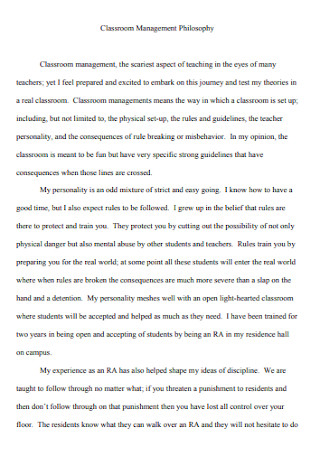
Sample Classroom Management Philosophy Template
download now -

Classroom Management Plan Educational Philosophy
download now -
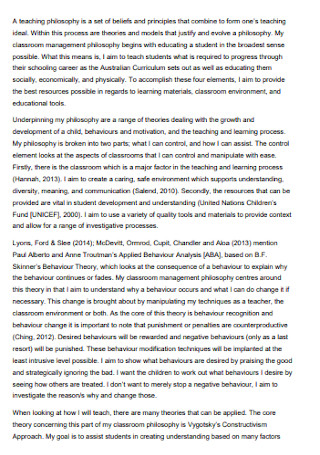
Personal Classroom Management Philosophy
download now -
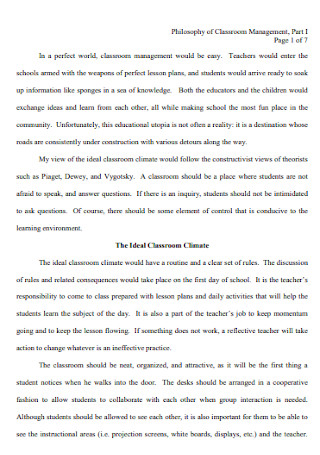
Basic Philosophy of Classroom Management Template
download now -
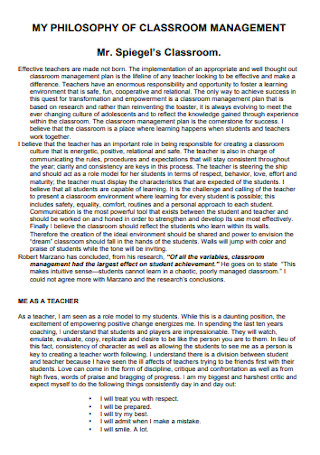
Simple Classroom Management Philosophy
download now -
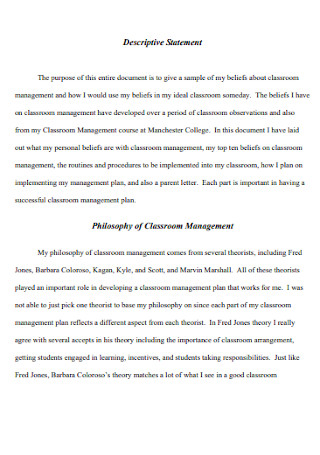
Philosophy Statement of Classroom Management Template
download now -
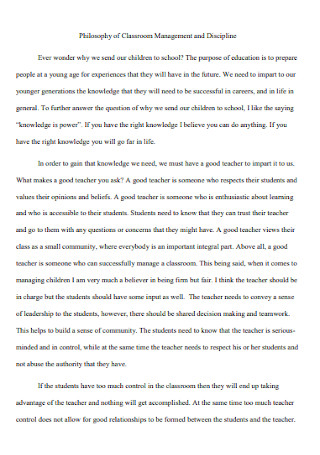
Philosophy of Classroom Management and Discipline Template
download now -
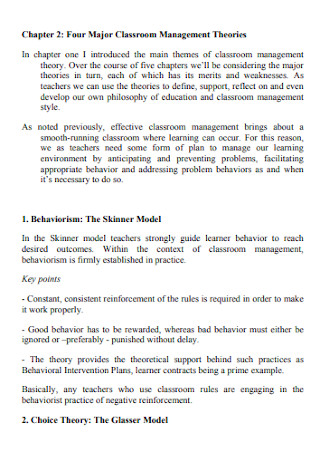
Four Major Classroom Management Theories Philosophy
download now -
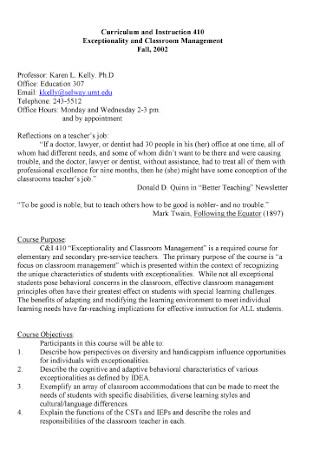
Exceptionality and Classroom Management Philosophy
download now -
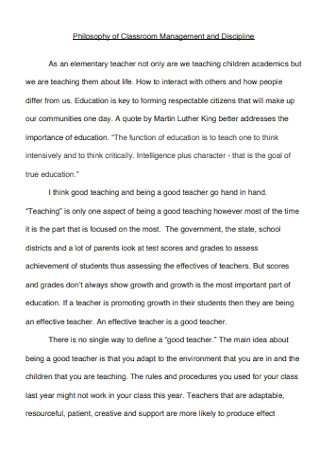
Formal Philosophy of Classroom Management and Discipline Template
download now -
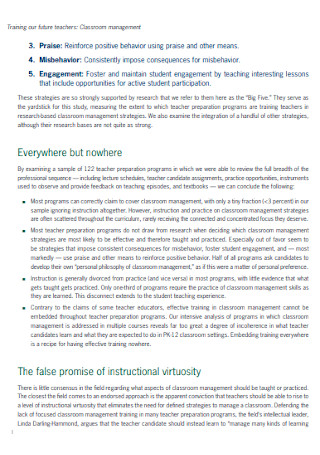
Teachers Classroom Management Philosophy Template
download now -
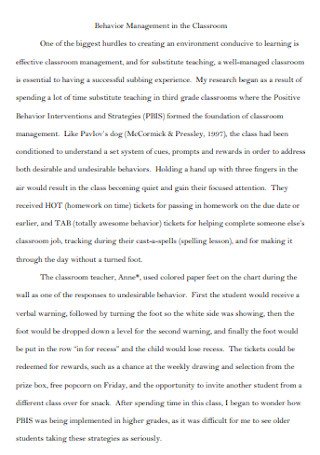
Behavior Management in the Classroom Philosophy
download now -
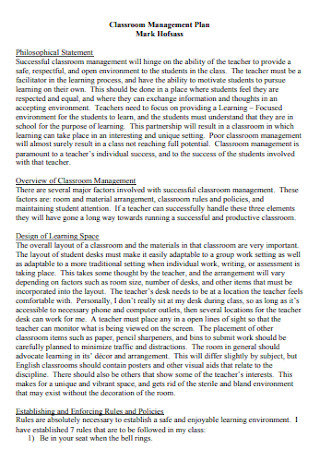
Classroom Management Philosophical Plan Statement Template
download now -
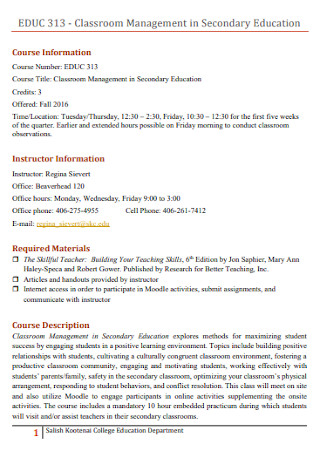
Classroom Management in Secondary Education Philosophy Template
download now -
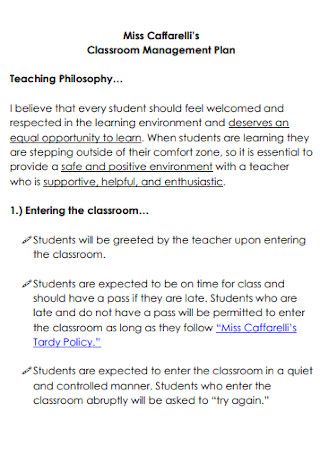
Classroom Management Plan Teaching Philosophy Template
download now -
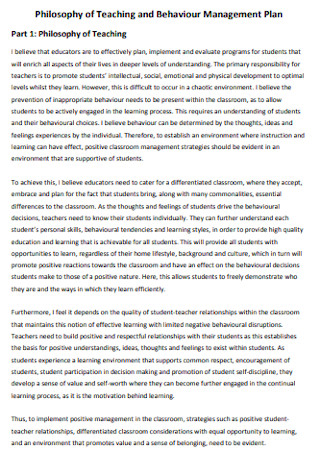
Classroom Management Philosophy of Teaching Template
download now -
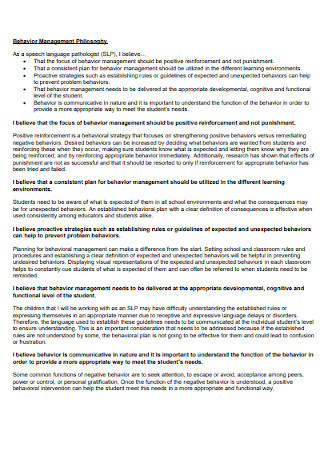
Classroom Management Behavior Philosophy
download now -
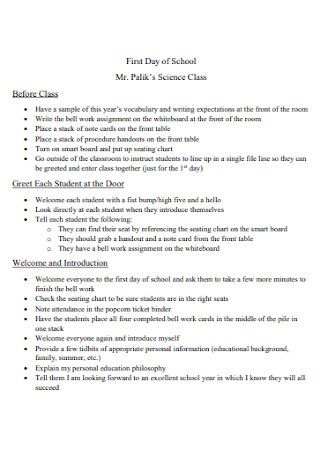
School Classroom Management Philosophy Template
download now -

Sample Personal Classroom Management Philosophy
download now -
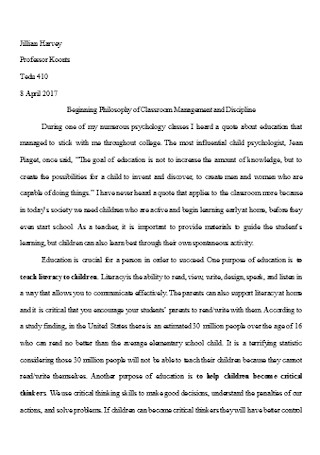
Sample Beginning Philosophy of Classroom Management Template
download now -
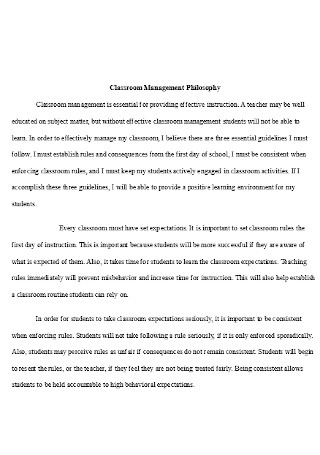
Standard Classroom Management Philosophy
download now
What is a Classroom Management Philosophy?
A classroom management philosophy states your beliefs and points of view about teaching and learning in general, bringing out your main ideas about effective education and discipline to your students. For teachers like yourself, having one helps you focus on accomplishing your objectives in teaching. Furthermore, this allows you to grow as an educator as well as to help you develop your students’ learning skills. So, what should this document contain? Well, at least try to answer these foundational questions as your guide:
- What is your reason for teaching?
- What do you have to teach your students?
- How do you plan to execute your teaching methods?
- Are your classroom management philosophies effective?
Theories of Classroom Learning
Students have different learning paces and learning styles. By knowing and understanding the theories of learning, you can easily integrate various techniques to improve your classroom management philosophies. Listed below are the different theories of classroom learning.
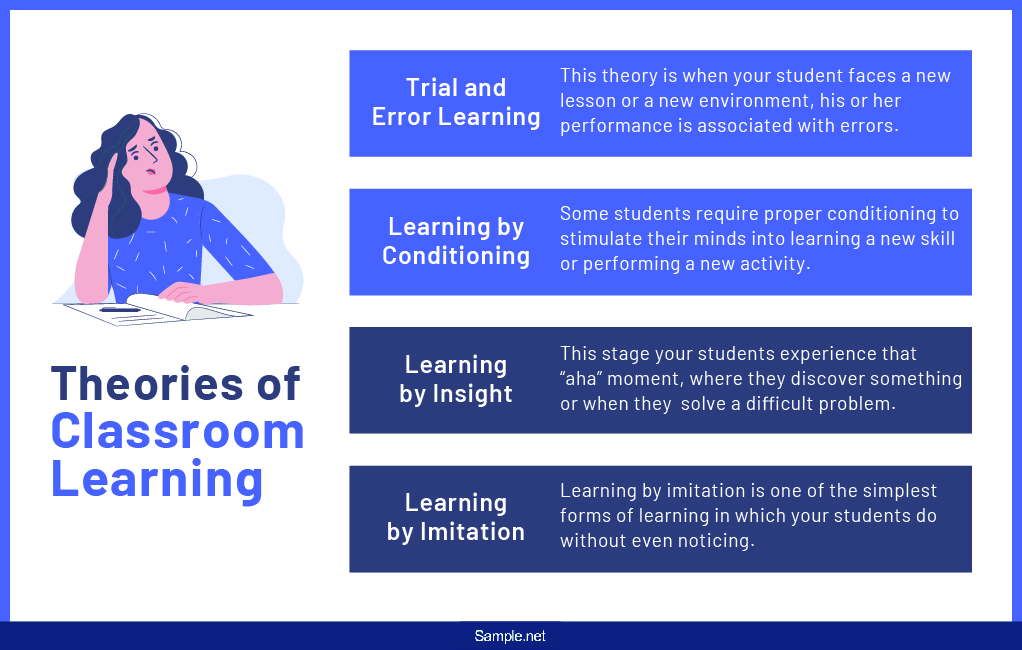
Best Classroom Management Strategies
Managing a classroom is one of the greatest challenges you experience as a teacher every year, yet it is one of your greatest achievements to see their students grow as the successful person they are in the future. But how your students respond to your teaching methods greatly depends on how you manage your classroom. Get to know some of the best classroom management strategies by reading the list below:
Set Classroom Rules and Regulation
Rules and regulations are a very crucial element in classroom management. It is essential to be very distinct with your classroom rule to inform your students on the dos and don’ts inside your class. Doing so allows you to properly manage your class and implement your classroom philosophies in the right way, reinforcing authority and order in class. Thus discouraging misbehavior and instead, giving them a consistent opportunity to learn.
Create Classroom Routines For Students
Setting routines in your classroom, like arranging their tables and chair before the class starts, checking their attendance five minutes before your lecture, or perhaps giving out a quiz every Friday gives your students a strong idea of what to anticipate in your class. With these routines, it stimulates your students on what to do before and after you enter the room, helping you and your students cultivate a more productive working atmosphere in the classroom.
Integrate Positivity in Class
Having a positive environment and attitude in class helps improve your students’ learning. A healthy relationship between you, your students, and their classmates make it better for your students to focus and perform better in class. The more they are comfortable with their environment, the better they can absorb your teachings, and the more they can express themselves in class. Therefore, showing their authentic, curious selves to other people.
Hear Out the Concerns of Your Students
Students are a curious bunch, no matter what age or level they are. When you notice them asking or clarifying a part of your discussion, do not automatically shut them off. Instead, grab this opportunity to build rapport and enhance their interest by answering their concerns. Valuing their concerns and opinions does not only provide you with fresh ideas for your lessons but also develop your student’s self-confidence and self-esteem. So, encourage your students to give more feedback and opinions to the group and understand their part as you go on with your discussion.
Keep Things Fun and Engaging in Class
Despite the rules and routines you implemented for your class, never forget to keep things fun and engaging for your students. Sometimes being too predictable bores your students, which is terrible since this may lead to unresponsive learning. And chances are they won’t attend your class anymore. Find ways to grab your student’s attention, with games, outdoor activities, and field trips. Keep things unpredictable (in the right way) and engaging for your students to get them excited and more energized every time you enter the room.
How to Write a Classroom Management Philosophy?
As a teacher, it is your primary responsibility to educate your students not only academic-wise but also character-wise. Share your classroom philosophy and your beliefs about education with your students and put your thoughts into words. If you need assistance in writing your classroom management philosophy, we provide you with a few tips below.
Step 1: Determine on Your Concept of Learning
Students have different styles of learning. Who is your audience? Determine your concept of learning and incorporate it with your classroom management philosophy. As much as possible, use this to your advantage to grab your student’s attention and interest by generating excellent ideas on how you may express your values and beliefs in teaching and learning.
Step 2: Set Your Classroom Management Goals
What is your purpose in making your classroom management philosophy? What are you trying to accomplish? Set your classroom management goals and indicate it in your philosophy statement. If you are trying to improve your student’s behavior and character, your student’s critical thinking, or your student’s physical attributes and skills, indicate it in your classroom management philosophy.
Step 3: Create Excellent Teaching Methods for Your Class
Now that you have set your concept of learning and teaching as well as your objectives. Think about the methods on how you can achieve your goals. Create excellent teaching methods that fit your class. Make it as interactive, as fun, and as unpredictable as possible to keep your students hooked from the beginning until the end without losing the value of learning.
Step 4: Assess Your Student’s Performances
After every activity or session you have with your students, see to it that you assess the performance and outcome of your class. How are your students performing? Are they learning well? Did they listen to your entire discussion? How many were absent or did not participate? Make your assessment and explain the reason behind it.
Step 5: Improve Your Classroom Management Plan
“There is always room for improvement” is what they say. After evaluating your performance and the performance of your class, go back to your classroom management philosophy, and check whether it worked according to plan or not. If it needs to be improved, apply the necessary improvement in your classroom management plan.
FAQs
What is Good and Effective Classroom Management?
Effective classroom management is not limited to keeping your students silent throughout the session. Instead, it’s all about taking good care of them while they learn in your class. Having effective classroom management requires patience, discipline, and awareness between you and your students. Focus on building trust and good relationships with your students and set rules, boundaries, and expectations at the beginning of the year to manage your class. Interact with your students and Get to know them as time passes by. Then, try to assess their performances to help them improve throughout the year.
How do you manage a talkative class?
It’s never easy to handle a class. Students love to talk and share ideas with their peers. However, there are times when you need to manage their noise during your discussion period. Some ways to manage your talkative class are to have them participate more with your lessons. Find ways to grab their interest by understanding their personalities and their type of learning. Then, give them a challenge with group work activities that are fun and entertaining for their level.
Is it okay to yell to regain control of the class?
The best answer for that is no. Not all teachers are loved by their students since everyone has a preference, but that doesn’t mean you have to shout your way out from the argument. The moment you yell to your students, you’re merely stating it loud and clear that you’ve completely lost control of them. Although you may have temporarily changed their behavior, that doesn’t mean it lasts forever. Plus, yelling provokes fear to your students instead of trust, making it harder for you to build rapport with them in the future.
How do you cope with an angry student?
Children have a lot of emotions and have great tendencies to display an outburst of tantrums due to their inappropriate emotional expressions, especially during their early childhood. However, as the teacher, it is your responsibility to maintain order in class. Help children cope up with their anger management issues by allowing them to calm down and talk about their problems privately. Try to understand their situation and support them academically and emotionally by allowing them to write down what happened, ask them to cool-off at the cool-off area, or maybe let them perform activities that can help them release their anger.
How do teachers stay calm in the classroom?
Teaching can be a struggle, especially when you have an unruly class. But as most professionals would say, “the show must go on.” So how do you stay calm despite your student’s poor behavior? Stay calm and positive; this may be difficult but is also effective. Take a deep breath and count to ten before approaching your students. Wait for a while until your mind has settled down. Listen to what your students say and use positive communication with them. Then, find common ground to solve the issue. What’s important is you should never take things personally to avoid being biased to your students.
As stated earlier, managing a classroom remains a great struggle for teachers, especially if you are still starting with your profession. However, good education requires effort, and making a classroom management philosophy helps you organize your class. Establish your philosophies at the beginning of the year and develop a good relationship with your students. But never depend on it too much, continue to assess the situation and always remember to be flexible and improvise the necessary changes if needed. So, which philosophy do you think worked best for you?